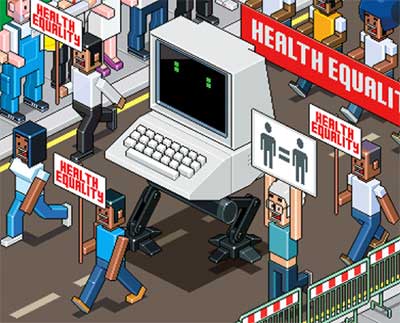Relevance: GS-2: Issues Relating to Development and Management of Social Sector/Services relating to Health, Education, Human Resources.
Key Phrases: State health index, NITI Aayog
Why in news?
- Kerala tops NITI Aayog’s State Health Index
Analysis:
What is State Health Index?
- The State Health Index is an annual tool to assess the performance of states and UTs, which has been compiled and published since 2017.
- It is a weighted composite index based on 24 indicators grouped under the domains of ‘Health Outcomes’, ‘Governance and Information’, and ‘Key Inputs/Processes’.
- For the fourth year in a row, Kerala has topped. Uttar Pradesh has come in at the bottom
What is status of Indian health system?
- Against global norm of 3 percent of GDP we spend only 1.5 percent on health
- Report released by United Nations Development Programme (UNDP), between 1990 and 2018, life expectancy at birth increased by 11.6 years in India, at 69.8 years now
Problems plaguing the health sector
- Low level of public expenditure-1.5% of GDP- WHO says only few sub Saharan countries spend lesser than India of GDP on health
- Regional disparity between south and empowered States-Kerala has IMR 7 while MP has 48-Kerala has MMR 42 while Bihar has 200
- High out of pocket expenditure-70% rural and 80% urban people go private-public sector accounts for 20% while 80% contributed by private sector-94% out of pocket expense
- Quackery-80% people routine reach a person who is not a registered medical practitioner and leads to high use of antibiotic and steroids-resistance problem
- Dysfunctional state of Integrated Disease Surveillance Programme (ISDP): It was launched in 2004 to strengthen decentralized laboratory-based IT enabled disease surveillance system for epidemic prone diseases to monitor disease trends
- India’s dependence on imports for pharmaceutical products like Active Pharmaceutical Ingredients (APIs)
- According to UNICEF, 71 percent of young women in India remain unaware of menstruation until their first cycle. • Bihar is the only state in India which has been providing two days of special leave every month to its female employees since 1992.
- Absence of Private Healthcare Infrastructure: Registry of Hospitals in Network of Insurance (ROHINI) data suggests that only 3% of private hospitals are eligible for the Ayushman Bharat scheme
Our health achievements
- Over 80% deliveries are done by skilled health care providers
- Between 2006-2014-stunting rates for children under 5 declined by 10%
- MMR down from 212 in 2007 to 122 in 2017 per lakh
Why this disparity in health indicators?
- India ranks 155 out of 167 countries on bed availability and has five beds and 8.6 doctors per 10,000 of its population. Rural India, which makes for 70 per cent of the population, has barely 40 per cent of the beds.
- Oxfam India findings show that higher public health allocations have a positive effect on health outcomes in a pandemic. For instance, States such as Odisha and Goa, with higher expenditure on health, also had higher recovery rate from Covid
- Over 50 per cent of people from SC and ST communities faced difficulties in accessing non-Covid medical facilities, compared to 18.2 percent of people in the ‘general’ category -Oxfam report
- Despite improvement in child immunisation, the rate of immunisation of girls continues to be below that of the male child.
Way ahead
- India needs to conduct more income/wealth surveys. This is not just about collecting wealth data twice in a decade, but also more consistently tracking the differential impact of specific policies on India’s rich and poor.
- India must immediately commit 3% of its GDP for public spending on health services, with the focus on free and universal primary and secondary health care.
- Improving robustness of Pharma Supply Chain: India needs to diversify its sources of raw materials as well as destinations for products
- Strengthen public health institutions-partnering with private players as recommended by national health policy 2017-govt can focus on rural areas where private business is not profitable
- Urgent need for dedicated public health cadre-fill vacancies against sanctioned posts-performance appraisal mechanisms linked to job specific indicators
Source: Business-standard









